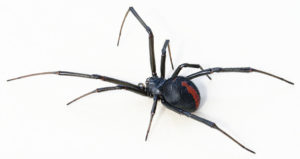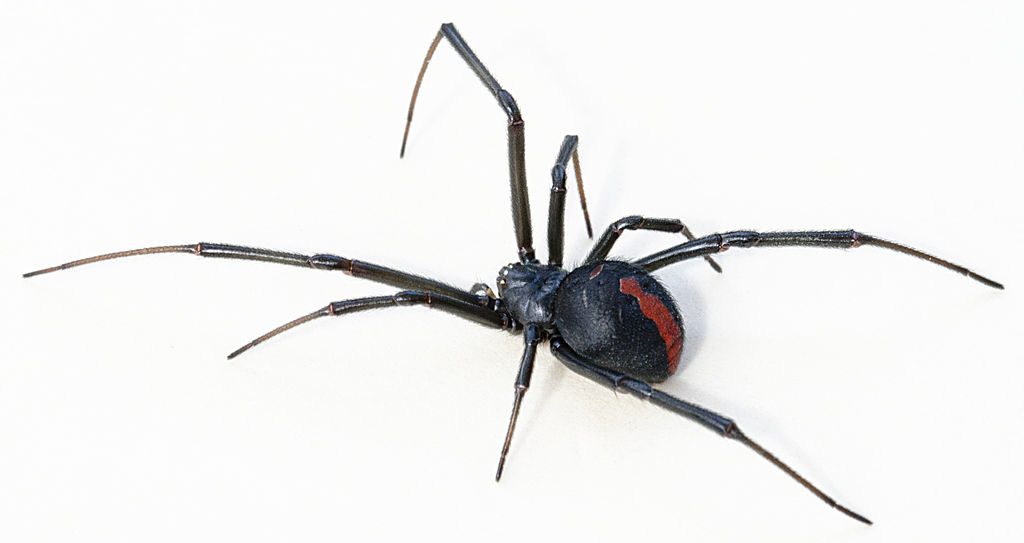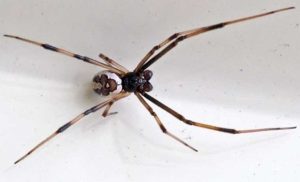For the first time in more than 10 years, South-East Queensland is in the midst of a redback spider epidemic. And whilst many Brisbane locals understand the risks of getting too close to the deadly redback spider, it’s now harder than ever to make sure you and your family stay safe.
We’ve put together a fact sheet about the redback spider to help you identify them, avoid getting bitten, and know what to do if you are bitten.
Identifying a redback spider
When many think of the redback spider, it’s the female they are picturing. And for good reason. The female is bigger than the male, and therefore the deadly one of the two.
Female Redback Spiders
- Prominent, long red stripe on her back
- Body length of around 1cm
- Adult females; jet black with red stripe
- Juvenile females; brown with white markings

Male Redback Spiders
- Lack the distinctive red stripe
- Body length of around 3-4mm
- Light brown with white markings
Identifying a redback web
A redback’s web is easy to identify due to it’s “messy” appearance. The seemingly irregular tangle is actually an extremely strong, sticky structure designed to capture their prey.
This is also why a redback’s web will be full of grass and other light pieces of debris which is blown in its path.
Behaviour
Unfortunately, and what makes redbacks so dangerous to humans, is their attraction to man-made habitats. Redbacks are naturally drawn to light and waste, making urban landscapes the perfect hunting ground for them.
Whilst the redback is mainly nocturnal, they still pose a major threat to humans. As such, the female remains hidden during the day and spins her web during the night.
Where can redbacks be found?
Our Brisbane heatwave has created the perfect environment for breeding causing this latest epidemic, as redbacks enjoy hot, dry conditions.
They tend to be found in and around items which have been left undisturbed for some time. These include:
- Outdoor furniture
- Rafters under the house or deck
- Sheds & garages
- Children’s toys
- Clothes, shoes, garden gloves etc., which have been left outside
- Stored cars or bicycles
- Even your letterbox!
How to stay safe from redbacks?
Due to the close proximity redbacks like to live to humans, it’s important to be vigilant around your home (especially with young children).
Here are our top tips to keeping your home redback-free (as much as possible):
- Don’t leave personal items and clothing outside.
- If you do, shake out all boots, clothes or gloves which have been left outside (and be cautious)
- Check around children’s toys, sandpits etc., before letting your kids play. If possible, bring toys inside when, not in use
- Be alert when rummaging through the garage or shed
- Wear gloves, long sleeve clothing and boots when gardening
- Check and clean your outdoor furniture often
- Keep an eye out for their distinctive web
- Enlist the help of a professional to spray around your home
With this redback epidemic in full swing, the safest thing you can do is hire a professional like Progressive Pest Management to conduct a treatment around your home. This is the best way to ensure the safety of you and your family from this deadly spider.
What to do if you’re bitten by a redback?
Whilst only the female bite is dangerous, due to the proximity in which redbacks live to humans, more than 250 people receive the antivenom every year.
The bite of a redback is extremely painful where the venom acts directly on the nerves and depletes our neurotransmitters.
If you think you’ve suffered a redback bite, apply ice to the bitten area to relieve pain. DO NOT APPLY A PRESSURE BANDAGE as this worsens pain and isn’t necessary. Seek medical attention immediately.
To have Progressive Pest Management visit your home or work and conduct a redback treatment, contact us today.


